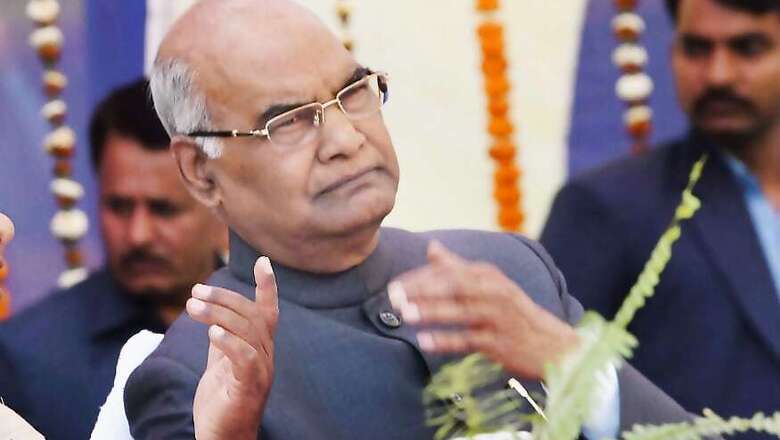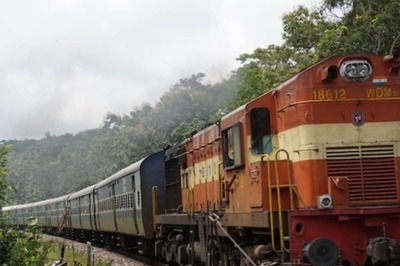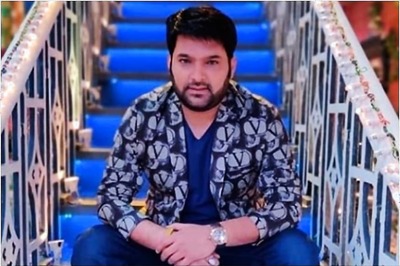
views
Perhaps the one clue that Prime Minister Narendra Modi has offered in a variety of his decisions over the past three years is: “Think outside Delhi”. In selecting Ram Nath Kovind, Governor of Bihar, as the BJP’s candidate for the presidency, yet again, Modi has bypassed the speculation in the national capital about one or the other “big name”, including some from within his cabinet.
What could have motivated Kovind’s selection? He is a Dalit, belonging to a small non-Jatav community, traditionally, a deprived sub-segment even within the Dalits. He is from Uttar Pradesh, a lawyer and politician of long standing, and has had strong ties with the RSS. An experienced administrator, he was once executive assistant to Morarji Desai, the late Prime Minister. As such he ticks many boxes.
Most important, Kovind’s choice indicates Modi is the consummate politician and completely alive to the symbolism of the presidential nomination only two years before the Lok Sabha election. The BJP’s primary aim in 2019 would be to secure its huge majority in Uttar Pradesh, where it won 71 of the 80 seats in 2014, with an allied party winning two seats.
In 2019, it is likely the Samajwadi Party and the BSP, along with the Congress, may come to an understanding to take on the BJP. Already, there are murmurs of BSP leader Mayawati’s election to the Rajya Sabha being facilitated by the SP, which could transfer votes to her.
The recent Dalit-Thakur violence in Saharanpur would also have indicated to the BJP that bringing Dalits into its fold in Uttar Pradesh, while somewhat successful in 2014 and 2017, remains a work in progress and is liable to be actively contested by political rivals. All these factors would have pointed to opting for Kovind. The signal to Dalits in Uttar Pradesh, and across the Hindi heartland, is critical to sustaining success in the upcoming state elections and finally in the 2019 Lok Sabha contest.
The imminent presidency of Kovind is also a landmark in the Sangh Parivar’s project of Hindu consolidation. Through the Hindutva surge of the late 1980s and early 1990s, especially during the Ayodhya movement, the Sangh and its various arms sought to broaden their social base. This was more sustainable among OBCs than among Dalits, and it was only in 2014 that Modi and Amit Shah made a concerted effort to reach out to younger Dalit voters. This was especially so in Uttar Pradesh where the Mayawati narrative had peaked and, while the BSP was still popular, Dalits, especially non-Jatavs, were looking for options.
The selection of Kovind could just be a turning point in the BJP’s – and the broader Sangh’s – engagement with Dalits, and lead to a consolidation of that constituency in the near term. If the OBCisation of the BJP was a theme of politics in Uttar Pradesh and north India in the 1990s, the next phase – of the party throwing up Dalit faces and leaders and emblems – is now upon us.
Is this a cynical ploy and should the BJP have looked at the choice for Rashtrapati Bhawan in non-electoral or non-political terms? That is a fair question but frankly an academic one. Non-political choices such as A.P.J. Abdul Kalam usually emerge when a compromise is needed and the government of the day cannot have its way. When the government is strong enough to push its nominee, it makes a political selection.
This is what Indira Gandhi did when she chose a lower-caste Sikh, Zail Singh, as president in 1982. This is what P.V. Narasimha Rao did when he went in for a northern Brahmin-southern Dalit combination in 1992: Shankar Dayal Sharma for president and K.R. Narayanan for vice-president. In 2007, when the Congress was well placed, Sonia Gandhi sent Pratibha Patil to the presidential palace. In 2012, when the Congress was on a weaker wicket and allied parties would not accept just another family loyalist, Sonia Gandhi recognised Pranab Mukherjee was the only feasible option for her party.
This time too Modi has plucked a name that fills many slots and that will be difficult for a series of opposition politicians to challenge.
The author is distinguished fellow, Observer Research Foundation


















Comments
0 comment